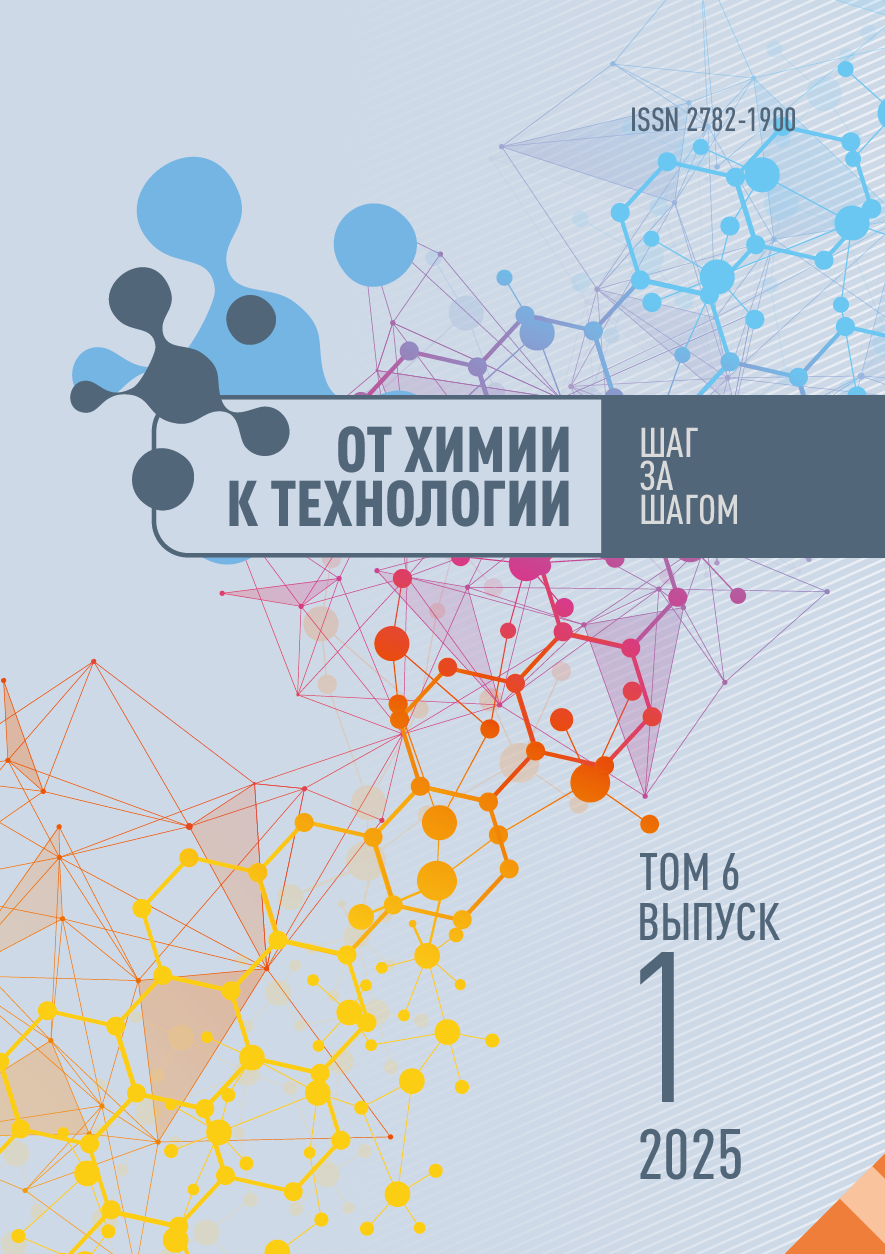Иваново, Ивановская область, Россия
студент
Иваново, Ивановская область, Россия
студент
Иваново, Ивановская область, Россия
студент
Иваново, Ивановская область, Россия
The research proposes a method of aggregation of metallic copper particles in colloidal aqueous solutions under the action of underwater diaphragm discharge initiated in the sound frequency range. This paper considers the mechanisms of the underwater diaphragm discharge effect on a colloidal solution of metallic copper stabilised by surface-active agents (surfactants). According to the research, these mechanisms can be quite complex. They include energetic, hydrodynamic, chemical, and electrochemical effects on both copper particles and surfactant molecules. Moreover, as a result of short-term plasma exposure to the solution it is possible to increase the size of copper particles on average by 2-2.5 times. The colloidal system degrades under prolonged exposure of the solution to plasma, and in extreme cases one can even observe the formation of copper oxides.
diaphragm underwater discharge, copper, colloidal system, nanoparticles
1. Kulichenko S.A., Shcherbina M.G. Micellar extraction of metal complexes with xanthene reagents into the phase of cetylpyridinium chloride. Izv. vuzov. Series Chemistry and Chemical Technology, 2012, 55(8), 23-27 (in Russian).
2. Kulichenko S.A., Shcherbina M.G. Micellar extraction of tin complex with phenylfluoron into liquid phase on the basis of cetylpyridinium chloride. Zhurn. analit. khimii [Journal of Analytical Chemistry], 2012, 67(11), 980-985 (in Russian).
3. Chernova R.K., Doronin S.Yu., Kozlova L.M., Pankratov A.N., Zhelezko O.I. Micellar extraction as a way to control analytical reactions. Zhurn. analit. khimii [Journal of Analytical Chemistry], 2003, 58(7), 714-715 (in Russian).
4. Elokhov A.M., Kudryashova O.S., Lesnov A.E. Anionic surfactants in extraction. Vestnik Permskogo universiteta. Seriya: Khimiya [Bulletin of Perm University. Series: Chemistry], 2015, 1(17), 30-43 (in Russian).
5. Matveychuk Yu.V. Means for automatic and manual dishwashing: surfactants, functional additives, enzymes, perfumes, colouring agents. Syr'e i upakovka dlya parfyumerii, kosmetiki i bytovoi khimii [Raw materials and packaging for perfumery, cosmetics and household chemistry], 2024, 1(270), 29-31 (in Russian).
6. Mandzyuk M.G., Kulichenko S.A. Micellar extraction of easily hydrolysable metal ions with 2,3,7-trioxyfluorones into the modified phase of cetylpyridinium chloride. AiK, 2014, 18(1), 99-104 (in Russian).
7. Gutenev V.V., Khasanov M.B., Montvila O.I., Azhgirevich A.I. Bactericidal properties of copper ions and the influence of various factors on them. Voda i ekologiya: problemy i resheniya [Water and Ecology: Problems and Solutions], 2001, 3(8), 21-27 (in Russian).
8. Panov V.P. Ecological issues of nanomaterials and nanocomposites production. Dizain. Materialy. Tekhnologiya [Design. Materials. Technologiya], 2013, 5(30), 79-81 (in Russian).
9. Begletsova N.N., Selifonova E.I., Zakharevich A.M., Chernova R.K., Glukhovskoy E.G. Preparation of colloidal solution of copper nanoparticles using cationic surfactant. Vestnik YuUrGU. Seriya: Khimiya [Bulletin of SUSU. Series: Chemistry], 2017, 9(4), 14-21. DOI:https://doi.org/10.14529/chem170402 (in Russian).
10. Sitanov D.V., Blinov D.I. Metal content monitoring in the biological structures. From Chemistry Towards Technology Step-by-Step. 2024, 5(1), 65-74. DOI: https://doi.org/10.52957/2782-1900-2024-5-1-65-74. Available at: https://chemintech.ru/ru/nauka/issue/5007/view (accessed 08.10.2024) (in Russian).
11. Melekhina E.V., Muzyka A.D., Ponezheva J.B., Gorelov A.V. Cetylpyridinium chloride in the composition of combined drugs for adults and children during the pandemic covid-19: confirmed opportunities and prospects. RMZh. Meditsinskoe obozrenie [RMJ. Medical Review], 2021, 5(11), 728-736. DOI:https://doi.org/10.32364/2587-6821-2021-5-11-728-736 (in Russian).
12. Nozhkina N.N., Simonyan E.V., Sinitsky A.I. Standardisation of dental drug film based on succinic acid and cetylpyridinium chloride using the method of high-performance liquid chromatography. Vopr. biol. med. i farm. khim. 2019, 22(8), 15-20. DOI:https://doi.org/10.29296/25877313-2019-08-03 (in Russian).
13. Dymnikova N.S., Erokhina E.V., Moriganov A.P., Kuznetsov O.Yu. Development of formulation of antiseptics and disinfectants based on silver nanoparticles. Ros. khim. zh. (Zh. Ros. khim. obs.), 2023, LXVII(1), 35-42. DOI:https://doi.org/10.6060/RCJ.2023671.5 (in Russian).
14. Deltsov A.A., Akulova S.V., Bachinskaya V.M., Rodkina O.R. Study of bactericidal action of antiseptic based on metal nanoparticles. Veterinariya, zootekhniya i biotekhnologiya [Veterinary, zootechnics and biotechnology], 2023, 2, 19-23. DOI:https://doi.org/10.36871/vet.zoo.bio.202302002 (in Russian).







